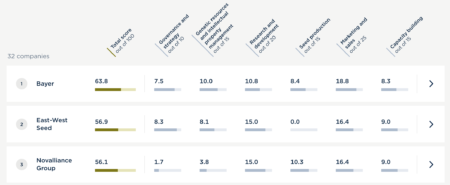- Reconsidering domestication from a process archaeology perspective. De-colonising, and de-transitivising, domestication.
- Maize biochemistry in response to root herbivory was mediated by domestication, spread, and breeding. Not archaeology, but an example of the more expansive view of domestication being touted above.
- Tracking the transition to agriculture in Southern Europe through ancient DNA analysis of dental calculus. Agriculture was associated with some changes in oral microbiomes, but not nearly as big as happened relatively recently. One could perhaps argue that some oral commensals were domesticated? No? Too much? More on dental calculus below…
- The Failed Globalization of Psychedelic Drugs in the Early Modern World. Culture and religion affected why tobacco spread around and peyote didn’t. Wait, domestication had nothing to do with it?
- Estimating agronomically relevant symbiotic nitrogen fixation in green manure breeding programs. All the better to domesticate them.
- Assessing Forage Potential of the Global Collection of Finger Millet (Eleusine coracana (L.) Gaertn.) Conserved at the ICRISAT Genebank. The top 10 identified, and they’re not bad, considering forage potential was not what the crop was domesticated for. ILRI unavailable for comment :)
- Genetic Diversity of Phenotypic and Biochemical Traits in VIR Radish (Raphanus sativus L.) Germplasm Collection. More variable than was once thought. Ah, domestication, you never disappoint…
- Preliminary evaluation of wild bean (Phaseolus spp.) germplasm for resistance to Fusarium cuneirostrum and Fusarium oxysporum. Wait, domestication can disappoint after all. Deeply. At least we still have the CWR.
- Not so local: the population genetics of convergent adaptation in maize and teosinte. People moved maize about, post-domestication, usefully bringing it into contact with teosinte. But the main author Dr Silas Tittes says it better. Hail the maize taxi!
- Modern Siberian dog ancestry was shaped by several thousand years of Eurasian-wide trade and human dispersal. People moved dogs about, post-domestication. The doggie taxi?
- Dairying enabled Early Bronze Age Yamnaya steppe expansions. People moved around because of milk. But the main author Dr Shevan Wilkin says it better, and links this with other important papers. Dental calculus never disappoints.
Inhibiting biological nitrification in elite wheat
Many thanks to Victor Kommerell for pointing me to a new paper representing a sort of culmination of work that we first blogged about back in 2007. The older paper posed a question in its title: Can biological nitrification inhibition (BNI) genes from perennial Leymus racemosus (Triticeae) combat nitrification in wheat farming? The answer now seems to be a resounding maybe.
Smallholder access to seeds in Africa benchmarked
You’ll remember that the good people at Access to Seeds Index rate seed companies on how and to what extent they make their products available to smallholder farmer in developing countries. Today they launched the results for 32 companies working in Western and Central Africa. Here are the key findings (I’m quoting):
- Seed companies are active in almost all index countries across Sub-Saharan Africa and South and South-east Asia.
- Many companies are providing more diverse portfolios for vegetables and field crops but need to offer more pulses to help tackle malnutrition.
- Leading seed companies are offering extension services in more countries.
- Companies are still only concentrating their investments in infrastructure in a few countries.
But you want to know who did well in the rankings, right? Ok, here’s the Top 3.

Well done, Bayer, East-West and Novalliance.
More Oz seed conservation resources
I’m not sure what their relationship is to the “Strategies and guidelines for developing, managing and utilising ex situ collections” from the Australian Network for Plant Conservation, which we blogged about a few days ago, but the similarly Australian Florabank Guidelines, “15 modules that roughly follow the seed supply chain,” also seem pretty useful.

Brainfood: Food system, Transformation of, Climate change effects on, Pandemic and, Future of, Effect of Green Revolution on, Mesoamerican CWR, Moroccan crop diversity, USA crop diversity, GM, Environmental behaviours
- Food systems: seven priorities to end hunger and protect the planet. Oh good, includes “Biodiversity and genetic bases need to be protected. Seed varieties must be preserved, and their phenotypes and genotypes explored in the contexts of climate change and nutrition. Traditional food and forest systems, including those of Indigenous peoples, need to be better understood and supported in national agricultural research systems.” Phew.
- Future Changes in Wet and Dry Season Characteristics in CMIP5 and CMIP6 Simulations. The above is just as well because longer hotter and drier spells are coming to the tropics, and crops will suffer.
- Global assessment of the impacts of COVID-19 on food security. Plus there’s this too. Resilience has a cost.
- The future of farming: Who will produce our food? Smallholders…
- When agriculture drives development: Lessons from the Green Revolution. …and that may be bad.
- Ok, the above two entries need unpacking. The second paper shows that the “agricultural engine of growth” was totally a thing during the Green Revolution, but the first that it now appears to be broken.
- Extinction risk of Mesoamerican crop wild relatives. Oh no, on top of everything else, we might lose avocados and vanilla.
- Determinants of Smallholder Maintenance of Crop Diversity in Morocco’s High Atlas Mountains. Markets, land and water. So what would any new Green Revolution do to diversity? Have we learned anything?
- Landscape complexity and US crop production. …are positively correlated. For Morocco too, I wonder?
- Utilize existing genetic diversity before genetic modification in indigenous crops. At least in Ethiopia.
- Compulsion and reactance: Why do some green consumers fail to follow through with planned environmental behaviors? Because some believe in technology, and other is abstinence. Which means they need different messages to encourage them to put their money where their mouths are. Would it work in Ethiopia?